Experimentalphysik funktionaler Spinsysteme
Prof. Christian Back
Forschungsgebiet
The research of our group is focused on the detailed understanding of magnetization dynamics in hybrid materials comprising of ultrathin magnetic layers in combination with topological materials or with materials inducing strong interfacial spin-orbit interaction. We tailor novel hybrid magnetic structures and investigate their static and dynamic magnetic properties. Among the subjects covered in our research are the dynamics in confined magnetic systems, magnonics, spin orbitronics, hybrid topological materials, high resolution magnetic microscopy as well as magnetic phase transitions in low dimensional systems.
In our group we use several techniques to examine magnetization dynamics, the propagation of spinwaves and the efficiency of charge to spin current conversion. At the heart of our research projects are various time and spatially resolved high resolution magnetic microscopy techniques in combination with microwave excitation and detection.
Adresse/Kontakt
James-Franck-Str. 1
85748 Garching b. München
efs.office@ph.tum.de
+49 89 289 12401
Fax: +49 89 289 12414
Mitarbeiterinnen und Mitarbeiter der Arbeitsgruppe
Professor
| Photo | Akad. Grad | Vorname | Nachname | Raum | Telefon | |
|---|---|---|---|---|---|---|

|
Prof. Dr. | Christian | Back | 021 | +49 89 289-12401 |
Sekretariat
| Photo | Akad. Grad | Vorname | Nachname | Raum | Telefon | |
|---|---|---|---|---|---|---|

|
Gertrud | Weiß | 025 | +49 89 289-12402 |
Wissenschaftlerinnen und Wissenschaftler
| Photo | Akad. Grad | Vorname | Nachname | Raum | Telefon | |
|---|---|---|---|---|---|---|
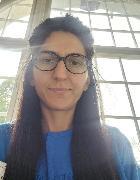
|
Dr. | Aisha | Aqeel | 029 | +49 89 289-12660 | |
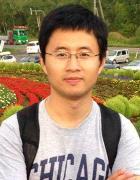
|
Dr. | Lin | Chen | 035 | +49 89 289-12406 | |

|
Dr. | Korbinian | Geirhos | 041 | +49 89 289-12674 | |

|
Anastasiia | Korniienko | 044 | +49 89 289-12400 | ||

|
M.Sc. | Carolina | Lüthi | 044 | +49 89 289-12400 | |

|
M.Sc. | Maximilian | Mangold | 031 | +49 89 289-12425 | |
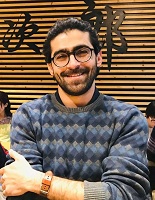
|
Sina | Mehboodi | 033 | +49 89 289-12405 | ||

|
Laura | Pietanesi | 041 | +49 89 289-12409 | ||

|
M.Sc. | Christian | Riedel | 044 | +49 89 289-12400 | |

|
M.Sc. | Jan | Sahliger | 043 | +49 89 289-12409 | |

|
Ph.D. | Dhavala | Suri | 029 | +49 89 289-12660 | |

|
Dr. | Takuya | Taniguchi | 033 | +49 89 289-12405 | |

|
M.Sc. | Franz | Vilsmeier | 027 | +49 89 289-12403 |
Studierende
| Photo | Akad. Grad | Vorname | Nachname | Raum | Telefon | |
|---|---|---|---|---|---|---|

|
Marko | Aligrudic | – | – | ||

|
M.Sc. | Jianping | Guo | 037 | +49 89 289-12407 | |

|
Johannes | Hielscher | – | – | ||

|
Niklas | Meier | – | – | ||

|
B.Sc. | Thomas | Narr | 031 | +49 89 289-12425 | |

|
M.Eng. | Jian | Shao | 035 | +49 89 289-12406 | |

|
B.Sc. | Yuhan | Sun | 037 | +49 89 289-12407 | |

|
B.Sc. | Esteban Alberto | Vindas Prado | – | – |
Andere Mitarbeiterinnen und Mitarbeiter
| Photo | Akad. Grad | Vorname | Nachname | Raum | Telefon | |
|---|---|---|---|---|---|---|
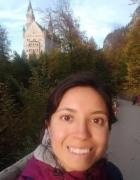
|
Dr. | Rebeca | Diaz Pardo | – | +49 89 289-12419 | |

|
Stephan | Lichtenauer | – | +49 89 289-12404 | ||

|
Dr. | Thomas | Meier | – | +49 89 289-12403 | |

|
Thomas | Rapp | – | +49 89 289-12404 | ||
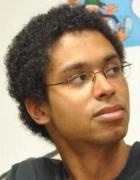
|
Dr. | Alexis | Wartelle | 035 | – |
Lehrangebot der Arbeitsgruppe
Lehrveranstaltungen mit Beteiligung der Arbeitsgruppe
Abgeschlossene und laufende Abschlussarbeiten an der Arbeitsgruppe
- Characterization of different NV concentrations for magnetometry
- Abschlussarbeit im Bachelorstudiengang Physik
- Themensteller(in): Christian Back
- Development of a Widefield NV Imager for Magnetic Nanostructures
- Abschlussarbeit im Masterstudiengang Physics (Applied and Engineering Physics)
- Themensteller(in): Christian Back
- Spin-orbit driven magnetic switching in 2-dimensional materials
- Abschlussarbeit im Bachelorstudiengang Physik
- Themensteller(in): Christian Back